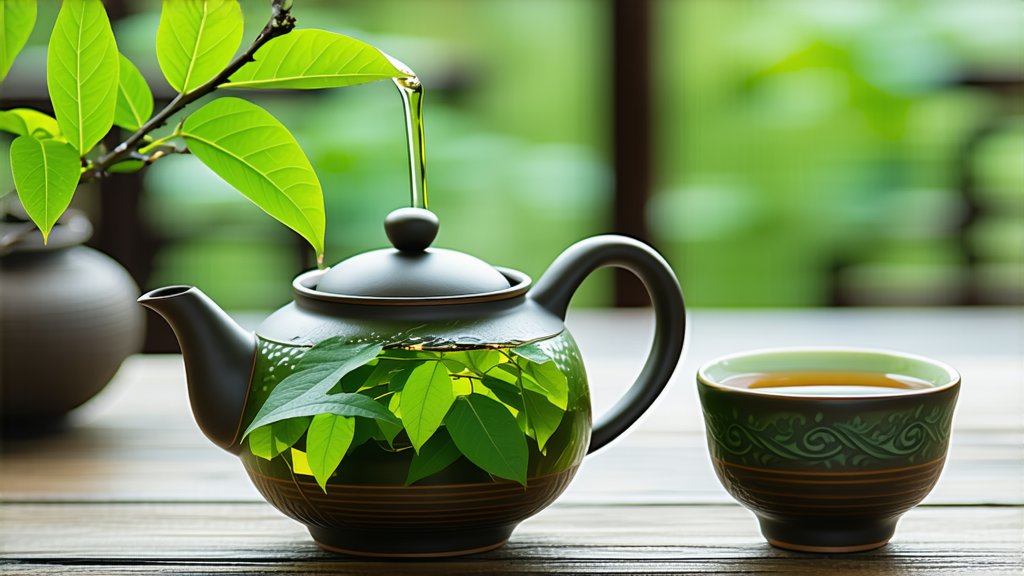
In the vast landscape of Chinese tea culture, Dragon Well Tea, also known as Longjing Tea, stands as a testament to the country's rich tea-making heritage. This iconic green tea, originating from the picturesque hills of Hangzhou in Zhejiang Province, has captivated tea enthusiasts worldwide with its unique flavor profile, delicate aroma, and fascinating history. Join us on a journey through the enchanting world of Dragon Well Tea, exploring its historical roots, varieties, meticulous production process, and the art of tea appreciation.
A Glimpse into History
The tale of Dragon Well Tea traces back over a thousand years to the Tang Dynasty (618-907 AD), when it was first cultivated in the lush tea gardens surrounding the West Lake. According to legend, during the Qingming Festival, Emperor Kangxi of the Qing Dynasty (1644-1912) visited these gardens and was so impressed by the tea's quality that he ordered it to be exclusively grown for the imperial court. The tea gained further prominence during the reign of Emperor Qianlong (1735-1796), who, after tasting the tea, proclaimed it "the best tea in the universe." Since then, Dragon Well Tea has been synonymous with excellence in Chinese tea culture.
Varieties of Dragon Well Tea
Dragon Well Tea is primarily classified into two main categories based on the time of harvest: Pre-Qingming and Post-Qingming. Pre-Qingming teas are considered the finest, as they are采摘 (plucked) before the Qingming Festival, typically in early April. These early-harvested leaves yield a more delicate flavor and higher concentration of nutrients. Post-Qingming teas, harvested after the festival, tend to have a bolder taste and are often more affordable.
Within these categories, there exist subtle variations in flavor, aroma, and appearance depending on factors such as the specific terroir, altitude, and cultivation practices. Some renowned sub-varieties include:
- Xihu Longjing: Grown in the core产区 (production area) around West Lake, this variety is highly prized for its exceptional quality and distinct chestnut flavor.
- Meijiawu Longjing: Cultivated in the Meijiawu Village, located at the southern end of West Lake, this tea is renowned for its flat, smooth leaves and vibrant green color.
- Shi Feng Longjing: Produced in Shi Feng Village, situated at a higher altitude, this variety boasts a stronger, more robust flavor profile.
The Art of Dragon Well Tea Production
The meticulous craftsmanship involved in creating Dragon Well Tea is a true reflection of China's tea-making artistry. The entire process can be divided into several key stages:
- Handpicking: Only the youngest, most tender leaves and buds are handpicked, ensuring optimal freshness and quality. This labor-intensive process requires great skill and precision.
- Fixation: After picking, the leaves undergo a brief heat treatment to halt oxidation and preserve their green color. This step can be achieved through pan-firing or steaming.
- Shaping: The fixed leaves are then meticulously shaped by skilled artisans using a technique called "抛锅炒茶" (pāo guō chǎo chá), where they are tossed and rolled in a heated wok until they achieve the characteristic flat shape reminiscent of dragon scales.
- Drying: The shaped leaves are finally dried to remove any remaining moisture, ensuring long shelf life without compromising flavor or aroma.
Throughout this intricate process, tea masters exercise utmost care and attention to detail, striving for perfection in every batch of Dragon Well Tea.
The Art of Tea Appreciation
To truly appreciate the nuances of Dragon Well Tea, one must engage in the traditional Chinese tea ceremony. This ritualistic practice not only enhances the sensory experience but also fosters a deep connection between the drinker and the tea itself. Here are some essential steps to guide you through the art of tea appreciation:
- Warm the Teaware: Begin by rinsing your teapot and cups with hot water to cleanse them and maintain the optimal temperature for brewing.
- Measure the Leaves: For a standard 200ml teapot, use approximately 3-4 grams of loose leaf Dragon Well Tea. Adjust the quantity based on personal preference and the strength of brew desired.
- Steeping: Pour hot water (around 80-85°C or 175-185°F) over the leaves, allowing them to unfurl gracefully. The initial steep should last about 1-2 minutes, with subsequent infusions gradually increasing in duration.
- Observe: Take a moment to admire the bright green hue of the liquor and the elegant dance of the leaves within the pot.
- Sip & Savor: As you take your first sip, let the tea gently roll over your tongue, paying attention to its smooth texture, refreshing taste, and subtle sweetness. Notice the delicate floral and vegetal notes that linger in your mouth.
- Repeat: Dragon Well Tea can be steeped multiple times, each infusion revealing new layers of flavor and complexity. Enjoy the evolving experience with each cup.
Conclusion
Dragon Well Tea embodies the essence of Chinese tea culture – a harmonious blend of tradition, craftsmanship, and nature's bounty. From its storied past to its meticulous production process and the meditative act of tea appreciation, every aspect of Dragon Well Tea invites us to slow down, savor life's simple pleasures. As you embark on your own journey through this enchanting world, may you find solace, inspiration, and a profound appreciation for the timeless art of tea.